MaryAnn Bernal's Blog, page 130
December 13, 2015
History Trivia - Boudouin with the Iron Arm, earl of Flanders, weds Judith
December 13
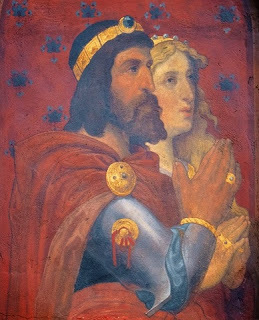
863 Boudouin with the Iron Arm, earl of Flanders, wed Charles II the Bald of France's daughter Judith. He was daring warrior who fell in love with the youthful widow of two English kings, married her and fled with his bride to Lorraine. Charles, though at first angry, was at last conciliated, and made his son-in-law margrave of Flanders, which he held as a hereditary fief. The Norsemen were continually devastating the coastlands at this time, and Baldwin was entrusted with this outlying borderland in order to defend it. He was the first of a line of strong rulers of Flanders, who early in the 10th century exchanged the title of margrave for that of count.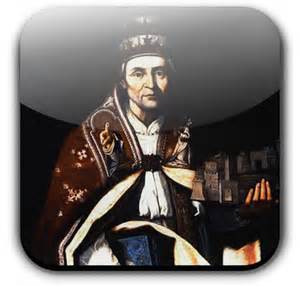
1294 Saint Celestine V resigned the papacy after only five months; Celestine, who founded the Celestine order, was the first pope to abdicate. He had accepted the position only because the papacy had been vacant for years and needed a leader. In his eighties when elected, the work proved too problematic, and he resigned.

863 Boudouin with the Iron Arm, earl of Flanders, wed Charles II the Bald of France's daughter Judith. He was daring warrior who fell in love with the youthful widow of two English kings, married her and fled with his bride to Lorraine. Charles, though at first angry, was at last conciliated, and made his son-in-law margrave of Flanders, which he held as a hereditary fief. The Norsemen were continually devastating the coastlands at this time, and Baldwin was entrusted with this outlying borderland in order to defend it. He was the first of a line of strong rulers of Flanders, who early in the 10th century exchanged the title of margrave for that of count.

1294 Saint Celestine V resigned the papacy after only five months; Celestine, who founded the Celestine order, was the first pope to abdicate. He had accepted the position only because the papacy had been vacant for years and needed a leader. In his eighties when elected, the work proved too problematic, and he resigned.
Published on December 13, 2015 02:30
December 12, 2015
Climate change didn't force Vikings to abandon Greenland, scientists say
Fox News

File photo - Heimdal Glacier in southern Greenland is seen in a NASA image captured by Langley Research Center's Falcon 20 aircraft Oct. 13, 2015 (REUTERS/NASA/John Sonntag/Handout via Reuters)
Climate change may not have played a role in Vikings’ 10th-century colonization of Greenland and abandonment of their colonies 400 years later, according to a new study.
The report published in the journal Science Advances challenges the long-held theory that Vikings settled on Greenland during warmer temperatures during the so-called Medieval Warm Period. Researchers analyzed chemical isotopes in boulders that were left by advancing glaciers over the last 1,000 years in Southwestern Greenland and nearby Baffin Island. Evidence points to a different story where Vikings settled a far colder, icier Greenland.
The findings reveal that the Medieval Warm Period, a balmy season that Europe experienced from 950-1250, was not felt elsewhere, including Greenland. Records show that Vikings first sailed from Iceland to Greenland in 985. They settled there in the 10th Century and anywhere from 3,000-5,000 settlers lived on Greenland, farming and harvesting walrus ivory.
Related: Stonehenge stones may have been first erected in another country
“It’s becoming clearer that the Medieval Warm Period was patchy, not global,” said lead author Nicolás Young, a glacial geologist at Columbia University’s Lamont-Doherty Earth Observatory, in a statement. “The concept is Eurocentric - that’s where the best-known observations were made. Elsewhere, the climate might not have been the same.”
The research not only challenges climate theories about the time when Greenland was settled by Vikings, it also calls into question long-held beliefs about the disappearance of the Viking settlers a handful of generations later. It was once believed that the colonies, which vanished sometime between 1360 and 1460, succumbed to a colder climate. The Vikings’ disappearance was thought to have followed the onset of the so-called Little Ice Age, which ran from about 1300-1850. Experts, however, have questioned this theory, noting the lack of early historical climate records from Greenland.
While the disappearance of the colonies remains a mystery, other theories now include hostility with the native Inuit, a decline in ivory trade and soil erosion caused by the Vikings’ cattle.
Related: Ancient 'wand' may be oldest example of lead work in the Levant
“I do not like the simplistic argument that the Greenland people went there when it was warm, and then ‘it got cold and they died’,” said Astrid Ogilvie, a climate historian based at Iceland’s Akureyri University, in the statement. “I think the Medieval Warm Period has been built on many false premises, but it still clings to the popular imagination.”
Europeans did not re-inhabit Greenland until the 1700s.
The rocks were analyzed at the University of Buffalo, and at the Lamont-Doherty lab of geochemist and study coauthor Joerg Schaefer. The analyses measured buildups of small amounts of Beryllium 10, an isotope created when cosmogenic rays strike rock surfaces newly exposed by melting ice, according to the statement.
In addition to Young and Schaefer, the paper was coauthored by Avriel Schweinsberg and Jason Briner of the University at Buffalo, who carried out the Greenland part of the fieldwork.

File photo - Heimdal Glacier in southern Greenland is seen in a NASA image captured by Langley Research Center's Falcon 20 aircraft Oct. 13, 2015 (REUTERS/NASA/John Sonntag/Handout via Reuters)
Climate change may not have played a role in Vikings’ 10th-century colonization of Greenland and abandonment of their colonies 400 years later, according to a new study.
The report published in the journal Science Advances challenges the long-held theory that Vikings settled on Greenland during warmer temperatures during the so-called Medieval Warm Period. Researchers analyzed chemical isotopes in boulders that were left by advancing glaciers over the last 1,000 years in Southwestern Greenland and nearby Baffin Island. Evidence points to a different story where Vikings settled a far colder, icier Greenland.
The findings reveal that the Medieval Warm Period, a balmy season that Europe experienced from 950-1250, was not felt elsewhere, including Greenland. Records show that Vikings first sailed from Iceland to Greenland in 985. They settled there in the 10th Century and anywhere from 3,000-5,000 settlers lived on Greenland, farming and harvesting walrus ivory.
Related: Stonehenge stones may have been first erected in another country
“It’s becoming clearer that the Medieval Warm Period was patchy, not global,” said lead author Nicolás Young, a glacial geologist at Columbia University’s Lamont-Doherty Earth Observatory, in a statement. “The concept is Eurocentric - that’s where the best-known observations were made. Elsewhere, the climate might not have been the same.”
The research not only challenges climate theories about the time when Greenland was settled by Vikings, it also calls into question long-held beliefs about the disappearance of the Viking settlers a handful of generations later. It was once believed that the colonies, which vanished sometime between 1360 and 1460, succumbed to a colder climate. The Vikings’ disappearance was thought to have followed the onset of the so-called Little Ice Age, which ran from about 1300-1850. Experts, however, have questioned this theory, noting the lack of early historical climate records from Greenland.
While the disappearance of the colonies remains a mystery, other theories now include hostility with the native Inuit, a decline in ivory trade and soil erosion caused by the Vikings’ cattle.
Related: Ancient 'wand' may be oldest example of lead work in the Levant
“I do not like the simplistic argument that the Greenland people went there when it was warm, and then ‘it got cold and they died’,” said Astrid Ogilvie, a climate historian based at Iceland’s Akureyri University, in the statement. “I think the Medieval Warm Period has been built on many false premises, but it still clings to the popular imagination.”
Europeans did not re-inhabit Greenland until the 1700s.
The rocks were analyzed at the University of Buffalo, and at the Lamont-Doherty lab of geochemist and study coauthor Joerg Schaefer. The analyses measured buildups of small amounts of Beryllium 10, an isotope created when cosmogenic rays strike rock surfaces newly exposed by melting ice, according to the statement.
In addition to Young and Schaefer, the paper was coauthored by Avriel Schweinsberg and Jason Briner of the University at Buffalo, who carried out the Greenland part of the fieldwork.
Published on December 12, 2015 03:00
History Trivia - Order of the Dragon created
December 12
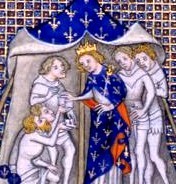
884 Charles the Fat inherited the West Frankish lands and briefly reunited the empire of his ancestor Charlemagne.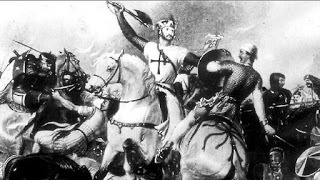
1189 Richard I left England, where he spent less than six months of his reign, to join the Third Crusade.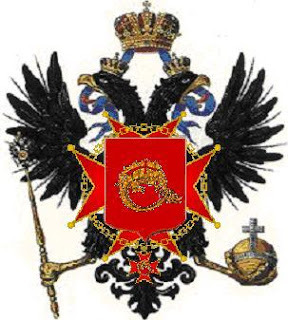
1408, The Order of the Dragon a monarchical chivalric order was created by Sigismund of Luxembourg, then King of Hungary.

884 Charles the Fat inherited the West Frankish lands and briefly reunited the empire of his ancestor Charlemagne.

1189 Richard I left England, where he spent less than six months of his reign, to join the Third Crusade.

1408, The Order of the Dragon a monarchical chivalric order was created by Sigismund of Luxembourg, then King of Hungary.
Published on December 12, 2015 02:00
December 11, 2015
Mary, Queen of Scots: what happened to her ladies-in-waiting?
History Extra
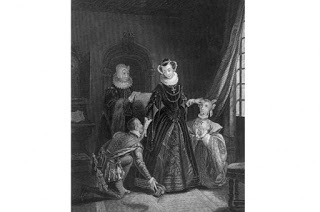
c1568: Mary, Queen of Scots attended by her pages & ladies-in-waiting at Lochleven Castle, Kinross (Hulton Archive/Getty Images)
“Yest're'en the Queen had fower Marys
The nicht she'll hae but three
There was Mary Seton and Mary Beaton,
And Mary Carmichael and me”
So runs the old ballad, remembering the four friends and companions of a fifth Mary – Mary Stuart, the romantic and ill-fated Queen of Scots. The queen’s fate is well known, but who were her four Marys, and what became of them?
Mary Stuart was Queen of Scots in her cradle. Her early years were spent in an atmosphere of unease as her mother, Marie de Guise, sought to protect her from the predatory Scottish nobles who fought for the regency and for control of the little queen. The nobility was divided between those who supported the traditional French and Catholic alliance that Marie represented, and those who looked to a newly Protestant England to support the burgeoning Scottish Reformation.
Despite this tension, Marie de Guise sought to give her daughter a happy childhood, and appointed four girls to be her companions and, later, ladies-in-waiting. What all the girls had in common, as well as their Christian name, was noble birth and similarity in age to the queen. There was also – whether deliberately or not – a pun in the choice of girls called Mary, as ‘marie’ was the Scots word for a maid, derived from the Icelandic ‘maer’.
The ballad above is slightly wrong on the names – they were Seton, Beaton, Fleming and Livingston. Fleming’s mother, Janet, Lady Fleming was the illegitimate half-sister of Mary’s father, James V, and Livingston was the daughter of the queen’s guardian, Alexander, 5th Lord Livingston of Callendar. Beaton’s grandfather was first cousin to Cardinal David Beaton, one of the men vying for the role of regent, while Seton was the daughter of George, 4th Lord Seton, and she and Beaton were also daughters of two of Marie de Guise’s ladies-in-waiting.
The four Marys in FranceThe location Marie de Guise chose as most likely to keep the queen safe during these troubled times was the almost impregnable fortress of Stirling Castle. However, it soon became apparent that this was not a long-term solution. The English government, first under Henry VIII, Mary’s great-uncle, and then the lord protector and council of Edward VI, were determined that she should marry Edward VI – a view supported by some of the Scots nobles.
Marie de Guise, and the pro-French faction among the nobles, were determined to prevent this, favouring the ‘Auld Alliance’ with France – especially when it came well lubricated with French pensions – and intended her to marry the French heir, Dauphin Francois [son of King Henri II]. In preparation for an escape to France, the queen was sent first to Inchmahome Priory, and then to Dumbarton on the coast. It was at Inchmahome that the four Marys joined her household. In 1548, they set sail for France.
The girls endured a rough crossing – all except the queen were afflicted by seasickness. Livingston and Fleming at least had the consolation of travelling with their families, since Lord Livingston and Lady Fleming as guardian and governess accompanied the queen. On arrival, Mary was immediately taken into the household of King Henri’s children, while her four friends were sent away.
Henri II’s motive for separating Mary from her companions was two-fold: first, he wanted her to speak French, rather than Scots, and second, he wanted her closest friends to be his daughters, the Princesses Elisabeth and Claude. Not that Henri was averse to a Scots tete-a-tete – Lady Fleming was sent home in disgrace after bearing him a son.
The four Marys were dispatched to the Dominican Royal Priory of Saint Louis at Poissy. Far from being a backwater, Poissy was at the forefront of Renaissance learning, with close ties to the court. There, the Marys would have received a thorough Humanist education, as well as learning all the skills necessary to be wives of noblemen, and attendants on a queen.
Seton seems to have been trained in hairdressing, too. Her skill in dressing her mistress’s head – first when Mary’s lustrous auburn hair was the toast of European courts, then afterward, when it thinned and greyed and was augmented by wigs – was remarked on. Later, the Marys returned to the queen’s household, where they enjoyed such domestic pleasures as making marmalade and crystallised fruit.
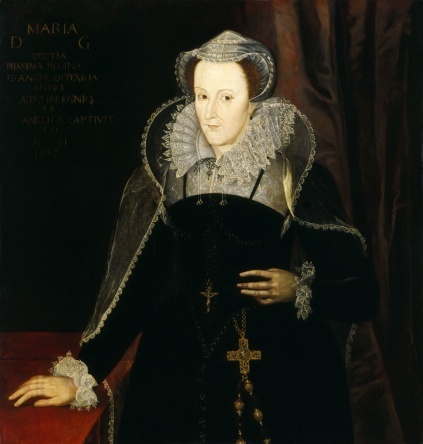 Mary, Queen of Scots © Lifestyle pictures / Alamy
Mary, Queen of Scots © Lifestyle pictures / Alamy
At the centre of the Scottish court, 1561–68Mary married Francois in 1558. Following her brief period as queen of France, the widowed Mary [Francois died in December 1560] returned to Scotland in 1561, aged 18, and ready to take up the burden of personal sovereignty. Her Marys returned with her as ladies-in-waiting.
The first years in Scotland were taken up with Mary’s determination to control the complex political situation with which she was faced. A group of nobles, led by James Stewart, 1st Earl of Moray (Mary’s half-brother), and calling themselves the Lords of the Congregation, had converted (some with rather more sincerity than others) to Protestantism, and changed the official religion of Scotland. This led them to look for support from Protestant England, rather than Catholic France.
Mary – no religious fanatic – tried to steer a course between the different factions that sought to dominate her. When not engaged in state business, the queen recreated some of the splendour of the court of France, and in this she was ably assisted by her Marys.
The four Marys went everywhere with the queen, even accompanying her to parliament in 1563. They had stools in her chamber, when to sit in the presence of the monarch was an extraordinary honour; they waited on her at table; and they took leading roles in the lavish court entertainments so important to 16th-century monarchy. They danced at masques, played music for visiting ambassadors, rode, hunted and hawked with the queen and her nobles.
More informally, they joined Mary in dressing up as burgesses’ wives to walk around Edinburgh and St Andrew’s, shopping in the market and cooking, in a faint foreshadowing of another doomed queen, Marie Antoinette. They even donned male costume – on one occasion at a banquet for the French ambassador, as well as for practical reasons when hunting – outraging the sensibilities of the increasingly dominant religious radicals.
Mary was unfortunate in that her greatest enemy at home was John Knox. Knox, a militant Calvinist, was even more misogynistic than most men of the age, and spent a good deal of time inveighing against female rule in such delightful tomes as “The first blast of the trumpet against the monstrous regiment of women”, and haranguing Mary in both public and private. Knox made the most of every innocent pastime derived from youth and high spirits at the queen’s court to insinuate that the queen and her entourage, including the Marys, lived immoral lives.
Pressure mounted for the queen to remarry – there were many at home and abroad who had their eyes on the crown – and even Mary’s person. In a frightening incident a foolish young poet, Chastelard, was found hiding under the royal bed. Mary, too nervous to sleep alone thereafter, took Fleming as her ‘bedfellow’. The queen’s affection for her Marys was one argument used to persuade her to take a husband, as they had all vowed to remain single while she did. Mary did remarry in July 1565, but life for all of the Marys would probably have been better had she stayed a widow – the marriage to Lord Darnley [who she wed in 1565] proved disastrous.
The Marys in loveWhatever the Marys’ earlier matrimonial intentions, the first of them, Livingston, was married in March 1565 to John Sempill, son of Robert, Lord Sempill. Knox, who had referred to Livingston as “lusty”, suggested the match was rushed – Livingston and Sempill, who was a noted dancer, had been tripping the light fantastic with gusto and from this, Knox inferred that she was pregnant. It seems unlikely, as the betrothal took place a year before the wedding and the first of their several children was not born until a year after it.
The queen attended the elaborate ceremony, and gave them a gift of a bed hung with scarlet and black velvet, with embroidered taffeta curtains and silk fringes, as well as land, drawing Knox’s fire again for granting lands to courtiers. Livingston remained at court as keeper of the queen’s jewels. When Mary made a will in 1566, Livingston drew up a minute inventory of her jewels – specimens of which were bequeathed to the Marys, should the queen die in childbed.
Beaton, considered the best looking of the four Marys, caught the eye of Thomas Randolph, the English ambassador. Around twice her age, perhaps he hoped that his position would attract her. The queen’s biographer, John Guy, refers to them as lovers, but it seems unlikely that one of the queen's closest friends would expose Mary to the risks of confidential information leaking out – unless Beaton were acting in concert with Mary, extracting information from Randolph.
Beaton must have had the reputation of being politically influential with the queen, as she received letters and gifts from the wife of Sir Nicholas Throckmorton, one of the other English ambassadors. Beaton was courted by Randolph for some time, but in 1566 married Alexander Ogilvy, by whom she had at least one son. Beaton died in around 1598, and her widower promptly married Lady Jean Gordon, the wife whom James Hepburn, Earl of Bothwell, had thrown off to marry Queen Mary.
Livingston was full of spirits and Beaton was the prettiest, but Fleming apparently carried the palm for overall attractiveness. As ‘Queen of the Bean’ at the Twelfth Night ceremonies in 1564, she was dressed in cloth of silver and jewels, and this “flower of the flock’s” dazzling looks attracted poetry and prose panegyrics.
Fleming was courted in 1564 by William Maitland of Lethington. Maitland had a chequered history in Mary’s service: one of the few nobles who was Protestant by conviction, he had joined the Lords of the Congregation and was a friend of Sir William Cecil, the English secretary of state, whose whole life was dedicated to eliminating Mary.
Maitland failed to warn Mary of the plot to murder her secretary, David Rizzio, and it is likely, too, that he knew of the plot against Darnley. [Darnley and a group of Protestant nobles stabbed to death Rizzio on 9 March 1566, after they convinced him Rizzio was Mary's lover. Mary could never forgive Darnley, who was himself murdered on 9 February 1567.]

David Rizzio's murder: Rizzio was stabbed to death - reportedly 56 times - in Mary's private apartments on 9 March 1566, where he had been enjoying a supper party with the queen and her friends. © Chronicle / Alamy
Fleming, of course, probably had no idea of the extent of Maitland’s duplicity. Maitland seems to have fallen headlong in love with her, and his passion was the subject of some mockery at court –nearly 20 years older than she was, he was described by one courtier as being as “suitable for her as I am to be pope”.
Maitland has been identified as a prime suspect for the forger of the casket letters, which triggered accusations that Mary was complicit in Darnley’s murder. [The letters contain eight missives and a series of sonnets said to have been written by Mary, Queen of Scots, to the Earl of Bothwell, between January and April 1567. They were produced as evidence against Queen Mary by the Scottish lords who opposed her rule].
Whatever his machinations, Maitland later became an adherent of what was known as the Queen's Party that wished to restore her, if not to full monarchy, at least to regency for her son, James. The Queen’s Party, which included Fleming and Maitland, held Edinburgh Castle in 1573, but when it was captured by the English they were handed over to the Regent, Morton.
Fleming was freed, struggling to retain her diamond and ruby chain that had been Queen Mary’s, while Maitland, carried out of the castle on a litter, died before he could be brought to trial. Suicide was rumoured. The King's Party planned to hang, draw and quarter his dead body, but Fleming wrote to Cecil, asking him to intervene. He passed the plea to Elizabeth, who requested the Scottish lords to spare the body.
Fleming waited until 1583 for Maitland’s lands to be restored. She and Maitland had two children – a son, James, converted to the old faith and fled to France, while their daughter, Margaret, became Countess of Roxburghe.
The fourth Mary, Seton, never married, but stayed with her mistress for many years. After the surrender at Carberry Hill [Mary surrendered and later went to exile in England following the battle of Carberry Hill, 15 June 1567, which took place near Edinburgh after a number of Scottish lords objected Mary’s rule following her marriage to the Earl of Bothwell, who was widely believed to have murdered her previous husband Lord Darnley], she joined Mary in captivity at Lochleven Castle.
By standing at a window, dressed in the queen's clothes, she gave Mary time to slip out of the castle, and escape across the loch in a rowing boat. Later, when Mary fled to even more onerous imprisonment in England, Seton was permitted to join her, and spent 15 years incarcerated in the gloomy series of castles where Mary wore her life away.
In 1570 Seton's mother wrote to her, and was apprehended by the King's Party, who sought to banish her from Scotland for communicating with Mary's household. Elizabeth intervened, requesting forbearance “if the cause be no greater” than writing to her daughter.
By 1583, even Seton's devotion and health were tried by the long imprisonment, and she was given leave to retire to a French convent at Rheims. Seton lived on to see her mistress's son inherit the crown of England, before dying in 1615. She was buried in the convent she had dwelt in for more than 30 years. Were her last thoughts of the charismatic queen she had served so faithfully, or did it all seem a distant dream?
“But why should I fear a nameless grave
When I've hopes for eternity….
There was Mary Seton and Mary Beaton,
And Mary [Fleming] and me”.
Melita Thomas is the editor of Tudor Times, a new website about daily life in the period. Visit www.tudortimes.co.uk to find out more.

c1568: Mary, Queen of Scots attended by her pages & ladies-in-waiting at Lochleven Castle, Kinross (Hulton Archive/Getty Images)
“Yest're'en the Queen had fower Marys
The nicht she'll hae but three
There was Mary Seton and Mary Beaton,
And Mary Carmichael and me”
So runs the old ballad, remembering the four friends and companions of a fifth Mary – Mary Stuart, the romantic and ill-fated Queen of Scots. The queen’s fate is well known, but who were her four Marys, and what became of them?
Mary Stuart was Queen of Scots in her cradle. Her early years were spent in an atmosphere of unease as her mother, Marie de Guise, sought to protect her from the predatory Scottish nobles who fought for the regency and for control of the little queen. The nobility was divided between those who supported the traditional French and Catholic alliance that Marie represented, and those who looked to a newly Protestant England to support the burgeoning Scottish Reformation.
Despite this tension, Marie de Guise sought to give her daughter a happy childhood, and appointed four girls to be her companions and, later, ladies-in-waiting. What all the girls had in common, as well as their Christian name, was noble birth and similarity in age to the queen. There was also – whether deliberately or not – a pun in the choice of girls called Mary, as ‘marie’ was the Scots word for a maid, derived from the Icelandic ‘maer’.
The ballad above is slightly wrong on the names – they were Seton, Beaton, Fleming and Livingston. Fleming’s mother, Janet, Lady Fleming was the illegitimate half-sister of Mary’s father, James V, and Livingston was the daughter of the queen’s guardian, Alexander, 5th Lord Livingston of Callendar. Beaton’s grandfather was first cousin to Cardinal David Beaton, one of the men vying for the role of regent, while Seton was the daughter of George, 4th Lord Seton, and she and Beaton were also daughters of two of Marie de Guise’s ladies-in-waiting.
The four Marys in FranceThe location Marie de Guise chose as most likely to keep the queen safe during these troubled times was the almost impregnable fortress of Stirling Castle. However, it soon became apparent that this was not a long-term solution. The English government, first under Henry VIII, Mary’s great-uncle, and then the lord protector and council of Edward VI, were determined that she should marry Edward VI – a view supported by some of the Scots nobles.
Marie de Guise, and the pro-French faction among the nobles, were determined to prevent this, favouring the ‘Auld Alliance’ with France – especially when it came well lubricated with French pensions – and intended her to marry the French heir, Dauphin Francois [son of King Henri II]. In preparation for an escape to France, the queen was sent first to Inchmahome Priory, and then to Dumbarton on the coast. It was at Inchmahome that the four Marys joined her household. In 1548, they set sail for France.
The girls endured a rough crossing – all except the queen were afflicted by seasickness. Livingston and Fleming at least had the consolation of travelling with their families, since Lord Livingston and Lady Fleming as guardian and governess accompanied the queen. On arrival, Mary was immediately taken into the household of King Henri’s children, while her four friends were sent away.
Henri II’s motive for separating Mary from her companions was two-fold: first, he wanted her to speak French, rather than Scots, and second, he wanted her closest friends to be his daughters, the Princesses Elisabeth and Claude. Not that Henri was averse to a Scots tete-a-tete – Lady Fleming was sent home in disgrace after bearing him a son.
The four Marys were dispatched to the Dominican Royal Priory of Saint Louis at Poissy. Far from being a backwater, Poissy was at the forefront of Renaissance learning, with close ties to the court. There, the Marys would have received a thorough Humanist education, as well as learning all the skills necessary to be wives of noblemen, and attendants on a queen.
Seton seems to have been trained in hairdressing, too. Her skill in dressing her mistress’s head – first when Mary’s lustrous auburn hair was the toast of European courts, then afterward, when it thinned and greyed and was augmented by wigs – was remarked on. Later, the Marys returned to the queen’s household, where they enjoyed such domestic pleasures as making marmalade and crystallised fruit.
 Mary, Queen of Scots © Lifestyle pictures / Alamy
Mary, Queen of Scots © Lifestyle pictures / AlamyAt the centre of the Scottish court, 1561–68Mary married Francois in 1558. Following her brief period as queen of France, the widowed Mary [Francois died in December 1560] returned to Scotland in 1561, aged 18, and ready to take up the burden of personal sovereignty. Her Marys returned with her as ladies-in-waiting.
The first years in Scotland were taken up with Mary’s determination to control the complex political situation with which she was faced. A group of nobles, led by James Stewart, 1st Earl of Moray (Mary’s half-brother), and calling themselves the Lords of the Congregation, had converted (some with rather more sincerity than others) to Protestantism, and changed the official religion of Scotland. This led them to look for support from Protestant England, rather than Catholic France.
Mary – no religious fanatic – tried to steer a course between the different factions that sought to dominate her. When not engaged in state business, the queen recreated some of the splendour of the court of France, and in this she was ably assisted by her Marys.
The four Marys went everywhere with the queen, even accompanying her to parliament in 1563. They had stools in her chamber, when to sit in the presence of the monarch was an extraordinary honour; they waited on her at table; and they took leading roles in the lavish court entertainments so important to 16th-century monarchy. They danced at masques, played music for visiting ambassadors, rode, hunted and hawked with the queen and her nobles.
More informally, they joined Mary in dressing up as burgesses’ wives to walk around Edinburgh and St Andrew’s, shopping in the market and cooking, in a faint foreshadowing of another doomed queen, Marie Antoinette. They even donned male costume – on one occasion at a banquet for the French ambassador, as well as for practical reasons when hunting – outraging the sensibilities of the increasingly dominant religious radicals.
Mary was unfortunate in that her greatest enemy at home was John Knox. Knox, a militant Calvinist, was even more misogynistic than most men of the age, and spent a good deal of time inveighing against female rule in such delightful tomes as “The first blast of the trumpet against the monstrous regiment of women”, and haranguing Mary in both public and private. Knox made the most of every innocent pastime derived from youth and high spirits at the queen’s court to insinuate that the queen and her entourage, including the Marys, lived immoral lives.
Pressure mounted for the queen to remarry – there were many at home and abroad who had their eyes on the crown – and even Mary’s person. In a frightening incident a foolish young poet, Chastelard, was found hiding under the royal bed. Mary, too nervous to sleep alone thereafter, took Fleming as her ‘bedfellow’. The queen’s affection for her Marys was one argument used to persuade her to take a husband, as they had all vowed to remain single while she did. Mary did remarry in July 1565, but life for all of the Marys would probably have been better had she stayed a widow – the marriage to Lord Darnley [who she wed in 1565] proved disastrous.
The Marys in loveWhatever the Marys’ earlier matrimonial intentions, the first of them, Livingston, was married in March 1565 to John Sempill, son of Robert, Lord Sempill. Knox, who had referred to Livingston as “lusty”, suggested the match was rushed – Livingston and Sempill, who was a noted dancer, had been tripping the light fantastic with gusto and from this, Knox inferred that she was pregnant. It seems unlikely, as the betrothal took place a year before the wedding and the first of their several children was not born until a year after it.
The queen attended the elaborate ceremony, and gave them a gift of a bed hung with scarlet and black velvet, with embroidered taffeta curtains and silk fringes, as well as land, drawing Knox’s fire again for granting lands to courtiers. Livingston remained at court as keeper of the queen’s jewels. When Mary made a will in 1566, Livingston drew up a minute inventory of her jewels – specimens of which were bequeathed to the Marys, should the queen die in childbed.
Beaton, considered the best looking of the four Marys, caught the eye of Thomas Randolph, the English ambassador. Around twice her age, perhaps he hoped that his position would attract her. The queen’s biographer, John Guy, refers to them as lovers, but it seems unlikely that one of the queen's closest friends would expose Mary to the risks of confidential information leaking out – unless Beaton were acting in concert with Mary, extracting information from Randolph.
Beaton must have had the reputation of being politically influential with the queen, as she received letters and gifts from the wife of Sir Nicholas Throckmorton, one of the other English ambassadors. Beaton was courted by Randolph for some time, but in 1566 married Alexander Ogilvy, by whom she had at least one son. Beaton died in around 1598, and her widower promptly married Lady Jean Gordon, the wife whom James Hepburn, Earl of Bothwell, had thrown off to marry Queen Mary.
Livingston was full of spirits and Beaton was the prettiest, but Fleming apparently carried the palm for overall attractiveness. As ‘Queen of the Bean’ at the Twelfth Night ceremonies in 1564, she was dressed in cloth of silver and jewels, and this “flower of the flock’s” dazzling looks attracted poetry and prose panegyrics.
Fleming was courted in 1564 by William Maitland of Lethington. Maitland had a chequered history in Mary’s service: one of the few nobles who was Protestant by conviction, he had joined the Lords of the Congregation and was a friend of Sir William Cecil, the English secretary of state, whose whole life was dedicated to eliminating Mary.
Maitland failed to warn Mary of the plot to murder her secretary, David Rizzio, and it is likely, too, that he knew of the plot against Darnley. [Darnley and a group of Protestant nobles stabbed to death Rizzio on 9 March 1566, after they convinced him Rizzio was Mary's lover. Mary could never forgive Darnley, who was himself murdered on 9 February 1567.]

David Rizzio's murder: Rizzio was stabbed to death - reportedly 56 times - in Mary's private apartments on 9 March 1566, where he had been enjoying a supper party with the queen and her friends. © Chronicle / Alamy
Fleming, of course, probably had no idea of the extent of Maitland’s duplicity. Maitland seems to have fallen headlong in love with her, and his passion was the subject of some mockery at court –nearly 20 years older than she was, he was described by one courtier as being as “suitable for her as I am to be pope”.
Maitland has been identified as a prime suspect for the forger of the casket letters, which triggered accusations that Mary was complicit in Darnley’s murder. [The letters contain eight missives and a series of sonnets said to have been written by Mary, Queen of Scots, to the Earl of Bothwell, between January and April 1567. They were produced as evidence against Queen Mary by the Scottish lords who opposed her rule].
Whatever his machinations, Maitland later became an adherent of what was known as the Queen's Party that wished to restore her, if not to full monarchy, at least to regency for her son, James. The Queen’s Party, which included Fleming and Maitland, held Edinburgh Castle in 1573, but when it was captured by the English they were handed over to the Regent, Morton.
Fleming was freed, struggling to retain her diamond and ruby chain that had been Queen Mary’s, while Maitland, carried out of the castle on a litter, died before he could be brought to trial. Suicide was rumoured. The King's Party planned to hang, draw and quarter his dead body, but Fleming wrote to Cecil, asking him to intervene. He passed the plea to Elizabeth, who requested the Scottish lords to spare the body.
Fleming waited until 1583 for Maitland’s lands to be restored. She and Maitland had two children – a son, James, converted to the old faith and fled to France, while their daughter, Margaret, became Countess of Roxburghe.
The fourth Mary, Seton, never married, but stayed with her mistress for many years. After the surrender at Carberry Hill [Mary surrendered and later went to exile in England following the battle of Carberry Hill, 15 June 1567, which took place near Edinburgh after a number of Scottish lords objected Mary’s rule following her marriage to the Earl of Bothwell, who was widely believed to have murdered her previous husband Lord Darnley], she joined Mary in captivity at Lochleven Castle.
By standing at a window, dressed in the queen's clothes, she gave Mary time to slip out of the castle, and escape across the loch in a rowing boat. Later, when Mary fled to even more onerous imprisonment in England, Seton was permitted to join her, and spent 15 years incarcerated in the gloomy series of castles where Mary wore her life away.
In 1570 Seton's mother wrote to her, and was apprehended by the King's Party, who sought to banish her from Scotland for communicating with Mary's household. Elizabeth intervened, requesting forbearance “if the cause be no greater” than writing to her daughter.
By 1583, even Seton's devotion and health were tried by the long imprisonment, and she was given leave to retire to a French convent at Rheims. Seton lived on to see her mistress's son inherit the crown of England, before dying in 1615. She was buried in the convent she had dwelt in for more than 30 years. Were her last thoughts of the charismatic queen she had served so faithfully, or did it all seem a distant dream?
“But why should I fear a nameless grave
When I've hopes for eternity….
There was Mary Seton and Mary Beaton,
And Mary [Fleming] and me”.
Melita Thomas is the editor of Tudor Times, a new website about daily life in the period. Visit www.tudortimes.co.uk to find out more.
Published on December 11, 2015 03:00
History Trivia - Religious festival Agonalia held
December 11
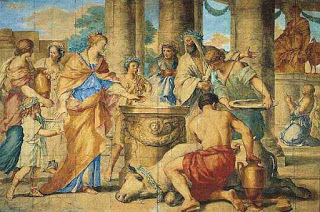
The Ancient Roman religious festival, Agonalia, held. It was also celebrated on January 9th, March 17th and May 21st. On each day a ram was sacrificed, probably as an offering to deities Janus and Angonius.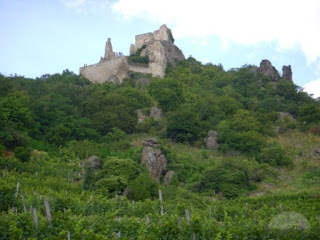
1192 Richard I (the Lionheart) was captured by Leopold, Duke of Austria, as he returned from the Third Crusade.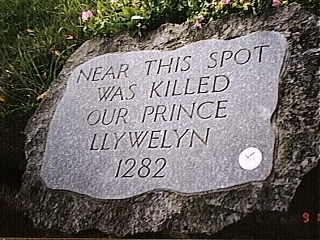
1282 Llywellyn the Last, the last native Prince of Wales, was killed at Cilmeri, near Builth Wells, south Wales by King Edward I of England soldiers.

The Ancient Roman religious festival, Agonalia, held. It was also celebrated on January 9th, March 17th and May 21st. On each day a ram was sacrificed, probably as an offering to deities Janus and Angonius.

1192 Richard I (the Lionheart) was captured by Leopold, Duke of Austria, as he returned from the Third Crusade.

1282 Llywellyn the Last, the last native Prince of Wales, was killed at Cilmeri, near Builth Wells, south Wales by King Edward I of England soldiers.
Published on December 11, 2015 02:00
December 10, 2015
Startling New Evidence Suggests Stonehenge was First Built in Wales then Transported and Reconstructed 500 Years Later in England
Ancient Origins
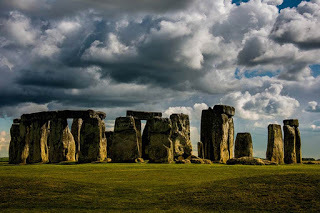 Archaeologists have found the exact holes in a rocky outcrop in Wales from where the bluestones found at Stonehenge originated, revealing that they were quarried 500 years before they were assembled into the famous stone circle that still stands today in Wiltshire, England. The dramatic discovery suggests that the ancient monument was first erected in Wales and later dismantled, transported, and reassembled over 140 miles away in Salisbury Plain.
Archaeologists have found the exact holes in a rocky outcrop in Wales from where the bluestones found at Stonehenge originated, revealing that they were quarried 500 years before they were assembled into the famous stone circle that still stands today in Wiltshire, England. The dramatic discovery suggests that the ancient monument was first erected in Wales and later dismantled, transported, and reassembled over 140 miles away in Salisbury Plain.
The Guardian reports that the finding was made during a project run by the University College London (UCL), in cooperation with the universities of Manchester, Bournemouth and Southampton, among others, to investigate quarries in the Preseli Hills in Pembrokeshire, Wales.
It has long been known that the bluestones – a term used in a loose sense to cover all of the ‘foreign’ stones which are not native to Salisbury Plain – originated in southwest Wales. Their name actually refers to the spotted dolerite, an igneous rock that looks blue when broken and is spotted with small pellets of feldspar and other minerals that got into the molten matrix when the rocks were forming geological ages ago. Nearly a century ago, in 1923, the eminent petrographer, Herbert Thomas, was able to identify their source as the Preseli hills.
Now archaeologists have been able to identify a series of holes in rocky outcrops that exactly match the size, shape, and consistency of Stonehenge’s bluestones at Carn Goedog and Craig Rhos-y-felin, to the north of Preseli hills.
Elevated Origins: Radical new theory suggests Stonehenge was base of an above-ground celestial altar Radar finds HUNDREDS more megalithic monuments, chapels, and shrines around Stonehenge Outline of missing stones appear at Stonehenge, proving stone circle was closed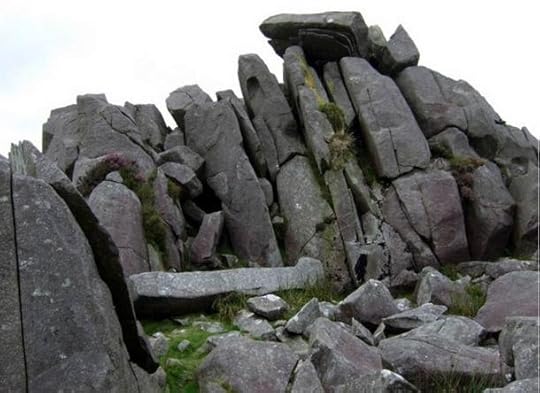 Bluestones at Carn Menyn in Wales (
public domain
)The holes have been radiocarbon dated – from nut shells and charcoal from the quarry workers’ campfires – to 3,400 BC at Craig Rhos-y-felin and 3,200 BC at Carn Goedeg. However, the bluestones were not assembled at Stonehenge until 2,900 BC, which raises the question as to why they were quarried centuries before their use in the famous stone monument in Wiltshire, England.
Bluestones at Carn Menyn in Wales (
public domain
)The holes have been radiocarbon dated – from nut shells and charcoal from the quarry workers’ campfires – to 3,400 BC at Craig Rhos-y-felin and 3,200 BC at Carn Goedeg. However, the bluestones were not assembled at Stonehenge until 2,900 BC, which raises the question as to why they were quarried centuries before their use in the famous stone monument in Wiltshire, England.
“It could have taken those Neolithic stone-draggers nearly 500 years to get them to Stonehenge, but that’s pretty improbable in my view,” Prof Mike Parker Pearson, director of the project, told The Guardian. “It’s more likely that the stones were first used in a local monument, somewhere near the quarries, that was then dismantled and dragged off to Wiltshire.”
One hypothesis is that the current dating of Stonehenge is wrong and it is actually much older. However, Professor Pearson believes “it’s more likely that they were building their own monument [in Wales], that somewhere near the quarries there is the first Stonehenge and that what we’re seeing at Stonehenge is a second-hand monument.” [via The Guardian]
Solving the enigma of Stonehenge Major Discovery: 4,500-year-old megalithic super-henge found buried one mile from Stonehenge The Missing Link to Stonehenge: Stone Age Eco-Home Discovered near Famous Monument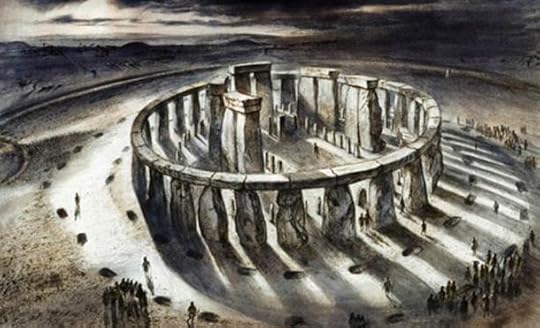 Reconstruction drawing of Stonehenge as it might have appeared in 1000BC by Alan SorrellMuch archaeological debate has been expended on how the bluestones arrived at Stonehenge – whether by human effort, floating the stones (each weighing several tonnes apiece) across water and dragging them across land, or whether they were deposited on Salisbury Plain naturally by glacial action. Although a small number of archaeologists still belief in the latter theory, most now believe the bluestones were brought by human transportation because glacial movement in the region does not support the transport of glacial erratics in the required manner. The latest discovery certainly suggests that the stones were intentionally transported to England.
Reconstruction drawing of Stonehenge as it might have appeared in 1000BC by Alan SorrellMuch archaeological debate has been expended on how the bluestones arrived at Stonehenge – whether by human effort, floating the stones (each weighing several tonnes apiece) across water and dragging them across land, or whether they were deposited on Salisbury Plain naturally by glacial action. Although a small number of archaeologists still belief in the latter theory, most now believe the bluestones were brought by human transportation because glacial movement in the region does not support the transport of glacial erratics in the required manner. The latest discovery certainly suggests that the stones were intentionally transported to England.
 Stonehenge, Wiltshire, England. 2014.
Diego Delso
, Wikimedia Commons, License
CC-BY-SA 3.0
According to The Guardian, the research team will now be carrying out geophysical surveys, trial excavations and aerial photographic analyses in the area between the two quarries in Wales to identify the area where a Stonehenge-like stone circle was originally assembled. The researchers have hinted at the fact that they may already have found a promising location and that a big discovery may follow in 2016.
Stonehenge, Wiltshire, England. 2014.
Diego Delso
, Wikimedia Commons, License
CC-BY-SA 3.0
According to The Guardian, the research team will now be carrying out geophysical surveys, trial excavations and aerial photographic analyses in the area between the two quarries in Wales to identify the area where a Stonehenge-like stone circle was originally assembled. The researchers have hinted at the fact that they may already have found a promising location and that a big discovery may follow in 2016.
Featured Image: The famous Stonehenge monument in Wiltshire, England. Howard Ignatius/ Flickr
By April Holloway
 Archaeologists have found the exact holes in a rocky outcrop in Wales from where the bluestones found at Stonehenge originated, revealing that they were quarried 500 years before they were assembled into the famous stone circle that still stands today in Wiltshire, England. The dramatic discovery suggests that the ancient monument was first erected in Wales and later dismantled, transported, and reassembled over 140 miles away in Salisbury Plain.
Archaeologists have found the exact holes in a rocky outcrop in Wales from where the bluestones found at Stonehenge originated, revealing that they were quarried 500 years before they were assembled into the famous stone circle that still stands today in Wiltshire, England. The dramatic discovery suggests that the ancient monument was first erected in Wales and later dismantled, transported, and reassembled over 140 miles away in Salisbury Plain.The Guardian reports that the finding was made during a project run by the University College London (UCL), in cooperation with the universities of Manchester, Bournemouth and Southampton, among others, to investigate quarries in the Preseli Hills in Pembrokeshire, Wales.
It has long been known that the bluestones – a term used in a loose sense to cover all of the ‘foreign’ stones which are not native to Salisbury Plain – originated in southwest Wales. Their name actually refers to the spotted dolerite, an igneous rock that looks blue when broken and is spotted with small pellets of feldspar and other minerals that got into the molten matrix when the rocks were forming geological ages ago. Nearly a century ago, in 1923, the eminent petrographer, Herbert Thomas, was able to identify their source as the Preseli hills.
Now archaeologists have been able to identify a series of holes in rocky outcrops that exactly match the size, shape, and consistency of Stonehenge’s bluestones at Carn Goedog and Craig Rhos-y-felin, to the north of Preseli hills.
Elevated Origins: Radical new theory suggests Stonehenge was base of an above-ground celestial altar Radar finds HUNDREDS more megalithic monuments, chapels, and shrines around Stonehenge Outline of missing stones appear at Stonehenge, proving stone circle was closed
 Bluestones at Carn Menyn in Wales (
public domain
)The holes have been radiocarbon dated – from nut shells and charcoal from the quarry workers’ campfires – to 3,400 BC at Craig Rhos-y-felin and 3,200 BC at Carn Goedeg. However, the bluestones were not assembled at Stonehenge until 2,900 BC, which raises the question as to why they were quarried centuries before their use in the famous stone monument in Wiltshire, England.
Bluestones at Carn Menyn in Wales (
public domain
)The holes have been radiocarbon dated – from nut shells and charcoal from the quarry workers’ campfires – to 3,400 BC at Craig Rhos-y-felin and 3,200 BC at Carn Goedeg. However, the bluestones were not assembled at Stonehenge until 2,900 BC, which raises the question as to why they were quarried centuries before their use in the famous stone monument in Wiltshire, England.“It could have taken those Neolithic stone-draggers nearly 500 years to get them to Stonehenge, but that’s pretty improbable in my view,” Prof Mike Parker Pearson, director of the project, told The Guardian. “It’s more likely that the stones were first used in a local monument, somewhere near the quarries, that was then dismantled and dragged off to Wiltshire.”
One hypothesis is that the current dating of Stonehenge is wrong and it is actually much older. However, Professor Pearson believes “it’s more likely that they were building their own monument [in Wales], that somewhere near the quarries there is the first Stonehenge and that what we’re seeing at Stonehenge is a second-hand monument.” [via The Guardian]
Solving the enigma of Stonehenge Major Discovery: 4,500-year-old megalithic super-henge found buried one mile from Stonehenge The Missing Link to Stonehenge: Stone Age Eco-Home Discovered near Famous Monument
 Reconstruction drawing of Stonehenge as it might have appeared in 1000BC by Alan SorrellMuch archaeological debate has been expended on how the bluestones arrived at Stonehenge – whether by human effort, floating the stones (each weighing several tonnes apiece) across water and dragging them across land, or whether they were deposited on Salisbury Plain naturally by glacial action. Although a small number of archaeologists still belief in the latter theory, most now believe the bluestones were brought by human transportation because glacial movement in the region does not support the transport of glacial erratics in the required manner. The latest discovery certainly suggests that the stones were intentionally transported to England.
Reconstruction drawing of Stonehenge as it might have appeared in 1000BC by Alan SorrellMuch archaeological debate has been expended on how the bluestones arrived at Stonehenge – whether by human effort, floating the stones (each weighing several tonnes apiece) across water and dragging them across land, or whether they were deposited on Salisbury Plain naturally by glacial action. Although a small number of archaeologists still belief in the latter theory, most now believe the bluestones were brought by human transportation because glacial movement in the region does not support the transport of glacial erratics in the required manner. The latest discovery certainly suggests that the stones were intentionally transported to England. Stonehenge, Wiltshire, England. 2014.
Diego Delso
, Wikimedia Commons, License
CC-BY-SA 3.0
According to The Guardian, the research team will now be carrying out geophysical surveys, trial excavations and aerial photographic analyses in the area between the two quarries in Wales to identify the area where a Stonehenge-like stone circle was originally assembled. The researchers have hinted at the fact that they may already have found a promising location and that a big discovery may follow in 2016.
Stonehenge, Wiltshire, England. 2014.
Diego Delso
, Wikimedia Commons, License
CC-BY-SA 3.0
According to The Guardian, the research team will now be carrying out geophysical surveys, trial excavations and aerial photographic analyses in the area between the two quarries in Wales to identify the area where a Stonehenge-like stone circle was originally assembled. The researchers have hinted at the fact that they may already have found a promising location and that a big discovery may follow in 2016.Featured Image: The famous Stonehenge monument in Wiltshire, England. Howard Ignatius/ Flickr
By April Holloway
Published on December 10, 2015 03:00
History Trivia - Martin Luther burns copy of the papal bull Exsurge Domine
December 10,
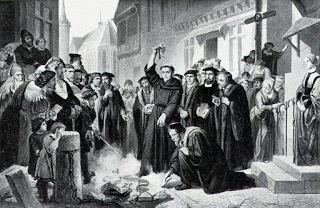
1520 Martin Luther burned his copy of the papal bull Exsurge Domine outside Wittenberg's Elster Gate.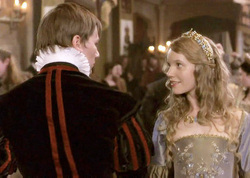 The Tudors
The Tudors
1541 Thomas Culpepper and Francis Dereham were executed for having affairs with Catherine Howard, Queen of England and fifth wife of Henry VIII. Culpepper was beheaded and Dereham was hanged, drawn, and quartered, and their heads were placed on top of London Bridge. Catherine remained imprisoned in Syon Abbey until Parliament passed a bill of attainder on 7 February 1542. The bill made it treason, and punishable by death, for a queen consort to fail to disclose her sexual history to the king within twenty days of their marriage, or to incite someone to commit adultery with her. This solved the matter of Catherine's supposed precontract and made her unequivocally guilty. She was subsequently taken to the Tower on 10 February and was executed on February 13th.

1520 Martin Luther burned his copy of the papal bull Exsurge Domine outside Wittenberg's Elster Gate.
 The Tudors
The Tudors1541 Thomas Culpepper and Francis Dereham were executed for having affairs with Catherine Howard, Queen of England and fifth wife of Henry VIII. Culpepper was beheaded and Dereham was hanged, drawn, and quartered, and their heads were placed on top of London Bridge. Catherine remained imprisoned in Syon Abbey until Parliament passed a bill of attainder on 7 February 1542. The bill made it treason, and punishable by death, for a queen consort to fail to disclose her sexual history to the king within twenty days of their marriage, or to incite someone to commit adultery with her. This solved the matter of Catherine's supposed precontract and made her unequivocally guilty. She was subsequently taken to the Tower on 10 February and was executed on February 13th.
Published on December 10, 2015 02:30
December 9, 2015
New Study Shows Some Greek Temples Were Oriented to the Moon or Stars, Rather than the Sun
Ancient Origins
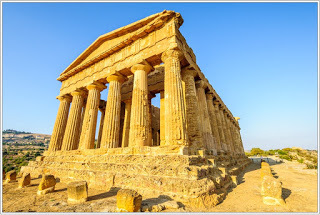 The Ancient Greeks, who designed temples in honor of gods, goddesses and heroes, usually oriented them facing the rising sun or to the cardinal directions. But a new study shows that a few of the Greek temples near the ancient Sicilian city of Agrigento are aligned to the stars, the moon and the layout of the city. A research team is exploring why.
The Ancient Greeks, who designed temples in honor of gods, goddesses and heroes, usually oriented them facing the rising sun or to the cardinal directions. But a new study shows that a few of the Greek temples near the ancient Sicilian city of Agrigento are aligned to the stars, the moon and the layout of the city. A research team is exploring why.
The temples in question are in the Valley of Temples outside Agrigento, a UNESCO World Heritage site. The city was known as Akragas in ancient times. For many years scholars have speculated about the orientations of the temples. Ten temples remain standing in Akragas, including those of Herakles, Jupiter, Juno, Demeter and Persephone, Concordia, and Vulcan.
The research team of Robert Hannah of the University of Waikato in New Zealand, Giulio Magli of the School of Civil Architecture in Milan and archaeoastronomer Andrea Orlando published the results of their study in arXiv.org. They wrote in the abstract:
The issue of the orientation of Greek Temples has been the subject of several debates since the end of the 19th century. In fact, although a general tendency to orientation within the arc of the rising sun is undeniable, specific patterns and true meaning remain obscure. … Our results include an important temple which was essentially yet unpublished, and most of all show that very different reasons influenced the orientation choices – some symbolical, but others by far more practical – besides the general rule of orienting “to the rising sun.” Thirty-eight of the 41 temples that originally stood in Akragas were aligned with the rising of the sun, scholars believe. But they wrote that they identified a temple oriented with the town’s grid, which was laid out on crossing lines of longitude and latitude. They also said two other temples with anomalous orientations, one aligned to a constellation and the other to the moon.
One of the three that apparently is not aligned with sunrise is the temple of Demeter and Persephone, later transformed into the church of San Biagio in the Middle Ages. It was built between 480 and 470 BC and is aligned with a lunar event called the azimuth.
 ‘The Return of Persephone’ by Frederick Leighton; the researchers are unsure why the temple of Demeter and Persephone, which they identified based on a statue, was oriented to the lunar azimuth. (
Wikimedia Commons
)Persephone is the daughter of Demeter, the goddess of nature. Her brother Hades, god of the underworld and afterlife, raped and abducted Persephone and took her to his realm. Demeter grieved and withheld grain from the people of Earth. Zeus, having mercy on humanity, sent Hermes to retrieve Persephone, who then lived in the world for eight months of the year and in the underworld during winter. In celebration at having her daughter back, Demeter established the Eleusinian mysteries—the most famous mystery rites in the ancient Greek world.
‘The Return of Persephone’ by Frederick Leighton; the researchers are unsure why the temple of Demeter and Persephone, which they identified based on a statue, was oriented to the lunar azimuth. (
Wikimedia Commons
)Persephone is the daughter of Demeter, the goddess of nature. Her brother Hades, god of the underworld and afterlife, raped and abducted Persephone and took her to his realm. Demeter grieved and withheld grain from the people of Earth. Zeus, having mercy on humanity, sent Hermes to retrieve Persephone, who then lived in the world for eight months of the year and in the underworld during winter. In celebration at having her daughter back, Demeter established the Eleusinian mysteries—the most famous mystery rites in the ancient Greek world.
 [image error]
[image error]
[image error]
[image error]

The temple of Juno on the hill in the background (Photo by poudou99/ Wikimedia Commons )The third is the temple of Zeus or Jupiter, the supreme god much loved by the ancient Greeks. “There is therefore little (if any) doubt that one of the largest temples of the Greek world, the Akragas temple of Jupiter – azimuth 78° 30' – was orientated topographically in accordance with the street grid,” they wrote. “Incredible as it may seem, we have been unable to find this simple explanation in the literature.”
The Greeks built their temples in natural places, and admission was reserved to priests and a select few others. The authors say the temple was the god’s home. The statue of the god looked out from the main axis in the direction of the sun in the east in most cases.
By: Mark Miller
 The Ancient Greeks, who designed temples in honor of gods, goddesses and heroes, usually oriented them facing the rising sun or to the cardinal directions. But a new study shows that a few of the Greek temples near the ancient Sicilian city of Agrigento are aligned to the stars, the moon and the layout of the city. A research team is exploring why.
The Ancient Greeks, who designed temples in honor of gods, goddesses and heroes, usually oriented them facing the rising sun or to the cardinal directions. But a new study shows that a few of the Greek temples near the ancient Sicilian city of Agrigento are aligned to the stars, the moon and the layout of the city. A research team is exploring why.The temples in question are in the Valley of Temples outside Agrigento, a UNESCO World Heritage site. The city was known as Akragas in ancient times. For many years scholars have speculated about the orientations of the temples. Ten temples remain standing in Akragas, including those of Herakles, Jupiter, Juno, Demeter and Persephone, Concordia, and Vulcan.
The research team of Robert Hannah of the University of Waikato in New Zealand, Giulio Magli of the School of Civil Architecture in Milan and archaeoastronomer Andrea Orlando published the results of their study in arXiv.org. They wrote in the abstract:
The issue of the orientation of Greek Temples has been the subject of several debates since the end of the 19th century. In fact, although a general tendency to orientation within the arc of the rising sun is undeniable, specific patterns and true meaning remain obscure. … Our results include an important temple which was essentially yet unpublished, and most of all show that very different reasons influenced the orientation choices – some symbolical, but others by far more practical – besides the general rule of orienting “to the rising sun.” Thirty-eight of the 41 temples that originally stood in Akragas were aligned with the rising of the sun, scholars believe. But they wrote that they identified a temple oriented with the town’s grid, which was laid out on crossing lines of longitude and latitude. They also said two other temples with anomalous orientations, one aligned to a constellation and the other to the moon.
One of the three that apparently is not aligned with sunrise is the temple of Demeter and Persephone, later transformed into the church of San Biagio in the Middle Ages. It was built between 480 and 470 BC and is aligned with a lunar event called the azimuth.
 ‘The Return of Persephone’ by Frederick Leighton; the researchers are unsure why the temple of Demeter and Persephone, which they identified based on a statue, was oriented to the lunar azimuth. (
Wikimedia Commons
)Persephone is the daughter of Demeter, the goddess of nature. Her brother Hades, god of the underworld and afterlife, raped and abducted Persephone and took her to his realm. Demeter grieved and withheld grain from the people of Earth. Zeus, having mercy on humanity, sent Hermes to retrieve Persephone, who then lived in the world for eight months of the year and in the underworld during winter. In celebration at having her daughter back, Demeter established the Eleusinian mysteries—the most famous mystery rites in the ancient Greek world.
‘The Return of Persephone’ by Frederick Leighton; the researchers are unsure why the temple of Demeter and Persephone, which they identified based on a statue, was oriented to the lunar azimuth. (
Wikimedia Commons
)Persephone is the daughter of Demeter, the goddess of nature. Her brother Hades, god of the underworld and afterlife, raped and abducted Persephone and took her to his realm. Demeter grieved and withheld grain from the people of Earth. Zeus, having mercy on humanity, sent Hermes to retrieve Persephone, who then lived in the world for eight months of the year and in the underworld during winter. In celebration at having her daughter back, Demeter established the Eleusinian mysteries—the most famous mystery rites in the ancient Greek world.“We know very little about the relationship between astronomy and those secret religious rites. A connection with the moon-orientated temple is possible and will be at the center of further research,” Magli told Discovery.The other is the temple of Juno or Hera, which the authors call magnificent, and which they say is oriented to the constellation Delphinus (the Dolphin). It was built in the middle of the fifth century BC. Hera was Zeus’ wife and the supreme goddess of the Olympians.
 [image error]
[image error]
[image error]
[image error]
The temple of Juno on the hill in the background (Photo by poudou99/ Wikimedia Commons )The third is the temple of Zeus or Jupiter, the supreme god much loved by the ancient Greeks. “There is therefore little (if any) doubt that one of the largest temples of the Greek world, the Akragas temple of Jupiter – azimuth 78° 30' – was orientated topographically in accordance with the street grid,” they wrote. “Incredible as it may seem, we have been unable to find this simple explanation in the literature.”
The Greeks built their temples in natural places, and admission was reserved to priests and a select few others. The authors say the temple was the god’s home. The statue of the god looked out from the main axis in the direction of the sun in the east in most cases.
“The god's domestic welfare (hence, the beauty and decorum of the building, correct insertion in the landscape, regular giving of daily offerings) was fundamental to assure benevolence and protection to the community,” they wrote. “The cult image, located in the central place of the temple, was in many cases an out-and-out masterpiece, like the famous ivory-and-gold statues of Zeus at Olympia and of Athena in the Parthenon in Athens.”Featured image: One of the Greek temples in the Valley of Temples outside Agrigento, Sicily (Photo by Jos Dielis/ Wikimedia Commons )
By: Mark Miller
Published on December 09, 2015 03:00
History Trivia - Catholic University of Leuven founded
December 9
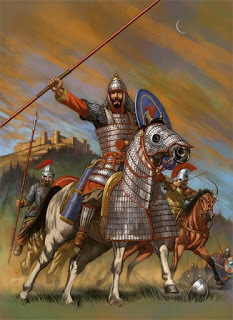
536 Byzantine General Belisarius conquered Rome, which had been occupied by the Ostrogoths, claiming Italy for the Byzantine empire.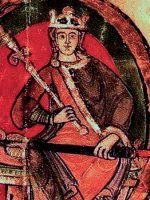
1165 King Malcolm IV of Scotland died; his short reign was marked by rebellion and tension with his cousin Henry II of England.
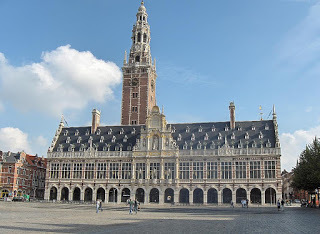
1425 The Catholic University of Leuven, the largest, oldest and most prominent university in Belgium was founded by John IV, Duke of Brabant, and approved by a Papal bull by Pope Martin V.

536 Byzantine General Belisarius conquered Rome, which had been occupied by the Ostrogoths, claiming Italy for the Byzantine empire.

1165 King Malcolm IV of Scotland died; his short reign was marked by rebellion and tension with his cousin Henry II of England.

1425 The Catholic University of Leuven, the largest, oldest and most prominent university in Belgium was founded by John IV, Duke of Brabant, and approved by a Papal bull by Pope Martin V.
Published on December 09, 2015 02:30
December 8, 2015
GO NAVY, BEAT ARMY Dec 12, 2015 3:00 PM

Go Navy, Beat Army
Army West Point Black Knights vs. Navy Midshipmen Dec 12, 2015 3:00 PM ESTLincoln Financial Field in Philadelphia.
Published on December 08, 2015 16:30



